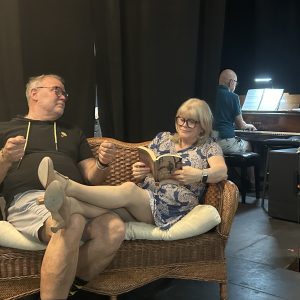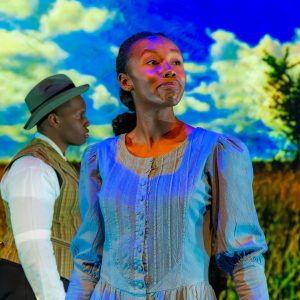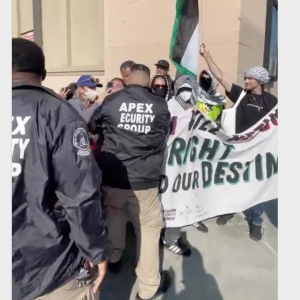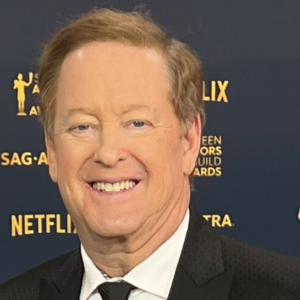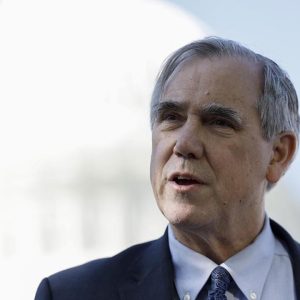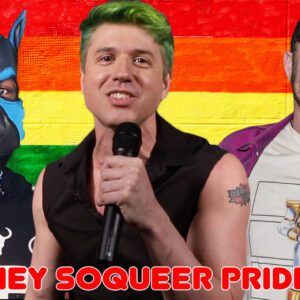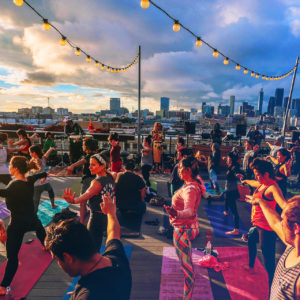 View Winners →
View Winners →
Chances are you’re already acquainted with Falling Whistles. The LA brand’s subtle yet curious pendants are natural conversation starters. Come across one elegantly dropped from a friend’s neck, and you instinctively sense something emblematic. You can’t help but be like, dude, what’s that whistle for?
And so maybe you already know—the whistle is part of a campaign for peace in the Great Lakes Region in Congo, a part of Africa devastated by decades of political instability, decentralized violence, and most importantly, a seemingly endless, terribly deadly war.
Falling Whistles is an awareness campaign, a political activist group, and a company that invests its proceeds in local businesses and rehabilitation in Congo. Uniquely, it’s a cause-connected brand with a forward-thinking aesthetic and a fashion-world appeal; the modernist black-and-white look of it never touches of granola, and we recently attended a party for the launch of FW’s new “5 Boys” line at uber-cool menswear shop Confederacy.
Okay, but without getting too wrapped up in the style-points earned from sleek, English-made whistle pendants and next-level graphic design, we were curious about the less-glamorous aspects of launching this movement and the tangible implications of its success. So we turned to founder Sean Carrasso to get some more detailed insight into what creating positive change really entails. Keep reading to find out how Sean’s back-packing trip turned into an e-mail-gone-viral turned into hitch-hiking across the country and finally, an organization with traction and a whole lot of momentum.
*******
Can you tell me about how all of this started, the inspiration behind the whistles and your back-story?
Originally I was just backpacking. Going out to get lost. We found a military encampment in Congo where kids were being beaten for war-crimes and freaked out. One boy told us that the kids too small to carry a gun had been sent to the front lines of war, armed with only a whistle. We ended up getting the kids pulled out and I went home and wrote a small journal entry called Falling Whistles. That was the beginning. The journal was forwarded around the world and I woke up to hundreds of emails asking, why is this happening, what’s going on? So we started asking those same questions of anyone who would talk to us—spies, victims, warlords, anyone.
When I got home I was just screaming at people—kids are dying! This is real! One of my best friends was letting me crash on his couch, and gave me an old vintage whistle he bought on eBay as a gift. Everywhere I went people would ask about the whistle and I got to tell them what was happening in Congo. It was all really organic. We started thinking about the power of the symbol, and the idea of being a “whistle blower.” We started putting them on people’s necks and saying “Make their weapon your voice and be a whistle-blower for peace.” Word spread pretty quickly, and soon we were building a coalition for peace in Congo out of our garage in Venice.
I’ve heard that the founders of Falling Whistles had sort of high-end fashion/design/marketing/tech jobs, and then decided to leave those careers and channel their skills into creating this campaign. Can you tell me more about how you/they came to that decision?
Ha. If only that were true. After we were selling whistles out of our pockets we got to about $150 and knew we wanted to reach the whole world. Thinking about it now, I just want to laugh. But our CEO David Lewis took that money and started hitchhiking across the country. He hitchhiked from Austin TX to New York City stopping in every city along the way and telling people about our world’s deadliest war. He inspired three college students who rode their bikes across the country and inspired more students. So we pulled desks out of dumpsters, put them in our garage and went to work with fists to the sky. That was when we started meeting the pros. The first was Monique who is a world class lawyer, then Mario our art director, Sinclair who manages the brand, and Joey who does digital marketing. We basically gave them all the same pitch—look, do you want to keep fueling the status quo or do you want to change the game? I remember when I met Mario, our art director, in NY. He was working for a big ad firm out there selling whatever was selling at the moment. We were on a cross country tour in a blacked-out RV and I asked him if he wanted to jump on the pirate ship. The next morning he showed up at the RV with two duffle bags in hand. We lived together for the next year getting the State Department to appoint a Special Advisor to Congo.
Where did the photographs of the war on your website come from?
Those shots are from Dan Johnson and Abby Ross. Both are incredible. On Dan’s first trip to Congo he got deep into the situation and was ultimately expelled from the country. That’s where you see a lot of the military shots. Abby is a very different character. She has a way of making human beings feel so comfortable around her. And you can see that in the shots of our partners and the women and children they work with. Despite living inside the deadliest place on Earth, they are beautiful, and they live with a great deal of courage. Abby really captures that with her photography.
You started with the rehabilitation of street kids and former child soldiers. How was it setting up an infrastructure to allow for this? How were the kids rehabilitated, and what happened to them next?
We started our work in Congo with a pretty simple idea – all change is local and all local change begins with a visionary. So we were looking for local leaders with a lot of energy, big ideas and the courage to see them through. That’s when we met Christine who was 26 and working with about 70 kids. She had no training, but it was clear that she was really talented. She had found some of the most vulnerable kids in the region – beaten, abducted, abused, you name it. But when they were all together with Christine it was like they were any other kid—laughing, break dancing, rapping, playing sports. We just asked, what do you want to do? She said she wanted over 300 kids and a center for them to be safe, learn job skills, and have outlets for their creativity. She needed about $3000 a month. We didn’t have any money, but we committed on the spot. A week later we were back in LA selling whistles on the Venice boardwalk. In over 3 years we haven’t missed a month.
How has the stiuation in Congo changed over the past several years?
The situation has changed significantly in the last few years. There are a lot of reasons, but mostly it comes down to unity and mobilization. Within the country, Congolese people are protesting, marching, communicating across ethnic boundaries, and connecting with the outside world. The outside world is doing the same. For years the “coalition” for Congo was fractured, angry and splintered. I think we’ve all woken up to the fact that we are stronger together.
What did it take to get involved on a political level, with other organizations in Congo?
Man, if only there were videos of our first moves in DC. When Dave was hitchhiking, he borrowed a suit and snuck his way into a meeting with the Undersecretary for African Affairs, Johnny Carson. Our first time in the White House we only had one suit between us, so we split it. I wore the jacket with jeans and he wore the slacks. We were young and didn’t know what we were doing, so we spent the first year in D.C. doing nothing but asking questions. We came in with no position, no policy prescriptions, no opinions. Just questions. We made a lot of friends, connected a lot of dots, and were then able to create solutions that unified people, policy and the need for peace.
Can you tell us a bit more about the appointment of a U.S. Special Advisor for the Great Lakes Region and the Democratic Republic of Congo? What does this advisor do?
I’m really glad you asked this. Because it’s so important. Congo is surrounded by 9 countries, and it is among the most resource rich countries in the world. Estimates put it around $24 trillion. And that’s just what’s in the ground. So the war is not country specific—it is regional and global. Everyone on the ground was saying that the U.S. strategy for Congo was disconnected from the strategy for Rwanda and that was disconnected from Uganda and Central African Republic and on and on and on. When we asked the State Department why their ambassadors weren’t coordinating together, they told us they were having monthly Skype calls. Monthly Skype calls?! Are you kidding me? So the U.S. Special Advisor coordinates across the region.

Where do the proceeds from sales of Falling Whistles go? Aside from raising awareness, how does the purchase of a necklace make a difference? Can you tell us a bit more about the eight Congolese visionaries Falling Whistles has invested in?
We’re essentially doing two major things. First, we are building a global coalition for peace in Congo. A network of people who want to see an end to the deadliest war of our time. This is what the team in LA is largely focused on. Second, we are investing in Congolese visionaries. These are Congolese people with big ideas for how to change their country. So for example, we have invested in Sekombi, who’s 29 and has built the fastest growing radio station in Eastern Congo. It’s like a lo-fi 80’s version of MTV Congo. Art, music, sex, politics, fashion, war, revolution, culture. So now when you travel across the east you see young people with a radio to their ear and if you ask who they’re listening to they smile and say “Mutaani! Mutaani!” We invested in Blaise who built a sustainable business that treated 330,000 people for malaria. Amani who built a hair training school for women. Justine who mobilizes women to demand justice surrounding rape. That list goes on, and its one our team is really proud of.
How have the military funding cuts from Western Governments impacted the war?
They’ve been really significant. In the end, the person holding the purse strings holds a lot of the power. Right now the United States government gives a great deal of aid money to Rwanda. And we have proof, through two separate UN reports, that Rwanda is funding and commanding a rebel army in Congo named M23. The funding cuts have been a great start, but its time the U.S. support sanctions for Rwandan officials commanding M23. I don’t think Americans want their tax money fueling rebels, or even coming anywhere close.
What’s next for the Falling Whistles campaign, what are your immediate goals?
We just launched a new collection of smaller whistles, the 5 Boys Collection. They’re symbolic of this moment when we met five boys in a military encampment who had been forced to fight against one another in opposing rebel armies. I asked, does that make you enemies? One boy looked at the other and kissed him, saying words I’ll never forget: “We are only boys, how can we be enemies?” So that’s the message of the collection. Half the world is under thirty and we’re more connected than we have ever been. How can we be enemies? In the short term, I want to get those whistles out to the public. The message is powerful and the pieces are beautiful; everyone should have one.




















